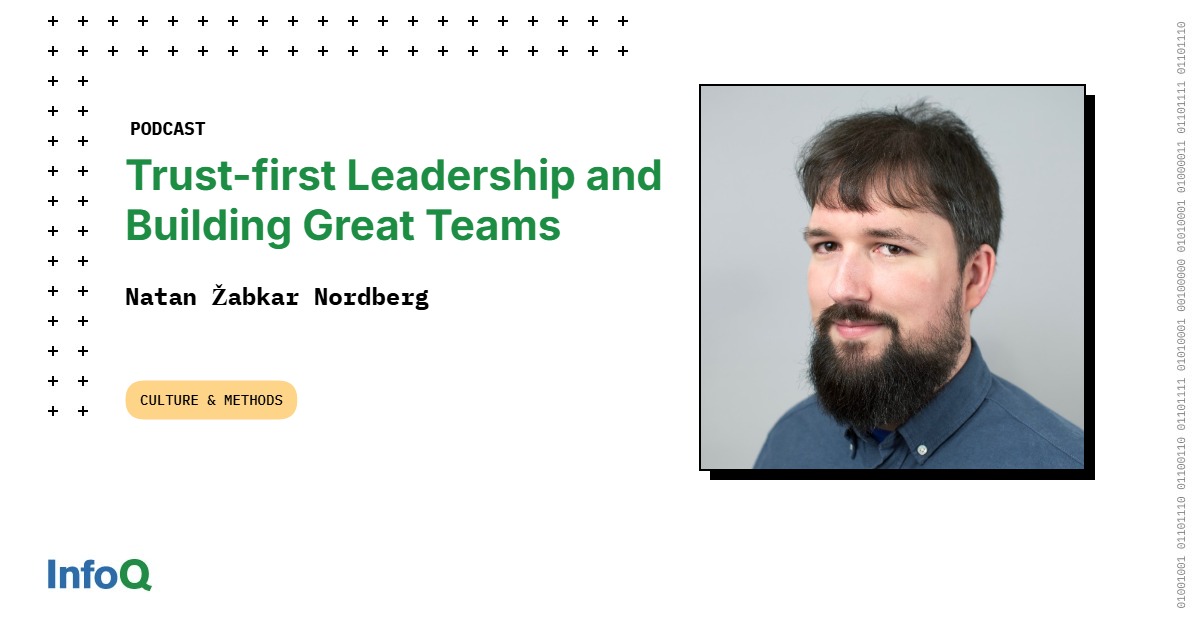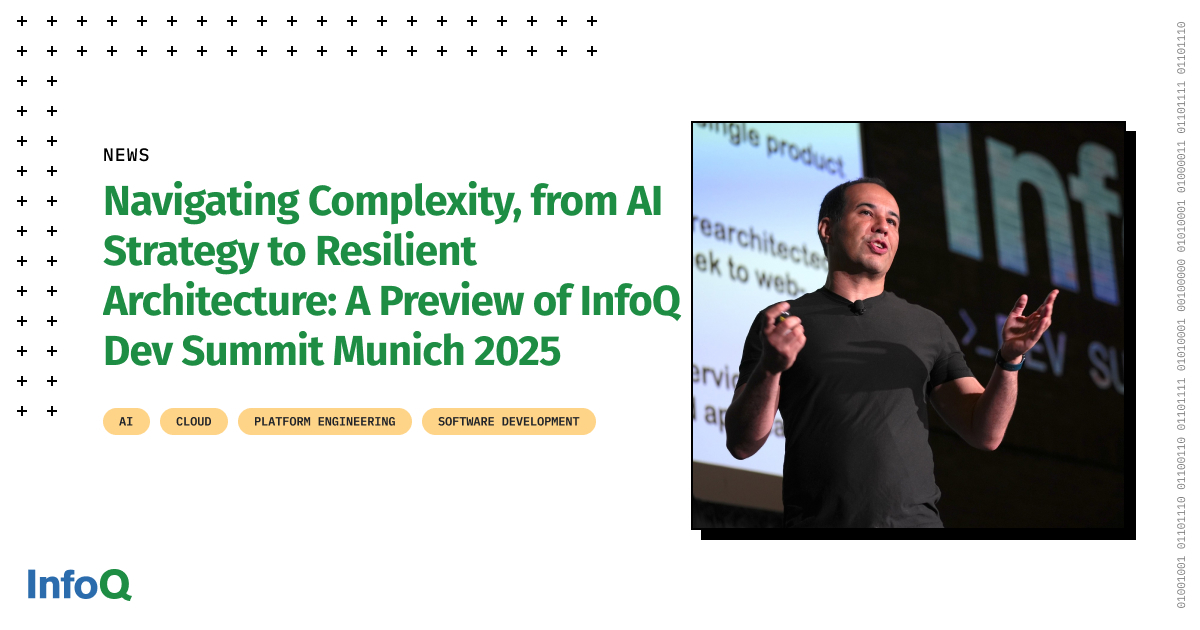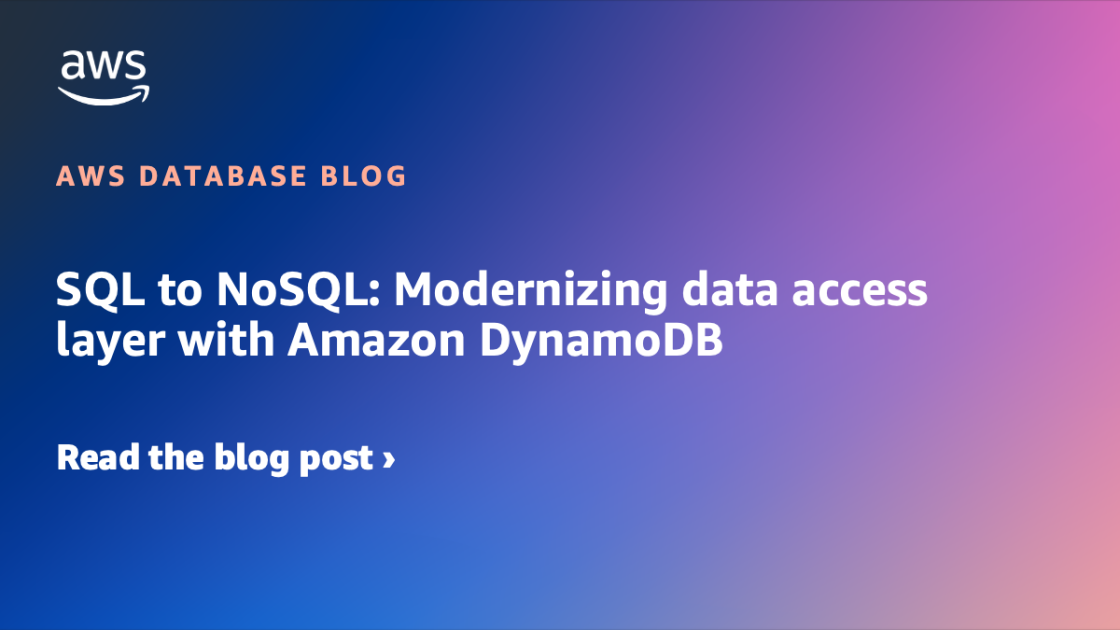Transcript
Shane Hastie: Good day, folks. This is Shane Hastie for the InfoQ Engineering Culture podcast. Today I’m sitting down at opposite sides of the world with Natan Žabkar Nordberg. Natan, welcome. Thank you for taking the time to talk to us.
Natan Žabkar Nordberg: Welcome to you, too. Thank you, Shane. It’s great to be here.
Shane Hastie: I am outside Wellington in New Zealand and you’re in Edinburgh, Scotland. So we are as far apart as it’s possible to be, but joined by the miracles of technology. My normal starting point in these conversations is who’s Natan?
Introductions [01:07]
Natan Žabkar Nordberg: Well, that’s a question that cuts a little bit deeper than the usual what do you do? I’ll cheekily answer that part first, actually. So I’m an engineering manager, which doesn’t really tell you much since it can mean very different things for different companies. But the important part for me is that I absolutely love all the main parts of my job and the way I see them, there’s three of them. There’s the technical part, which can either be low-level technical work, writing code, things like that.
Or more high-level, which is architectural discussions, talking about the technical problems in a general sense, things like that. Then there’s the organizational side of things, which is leading teams, organizing people, turning a little bit of that chaos into order. And then there’s the people side of things with which I mean both your usual line management, but also the more personal management.
So for instance, I don’t believe that when I’m a manager, I’m just a manager for the company. My job is not to just get the most out of a person for the company or anything like that. My job is also to help support the person themselves and perhaps the best way to support them is to tell them that they should be looking for something else, not my company specifically. And I feel that that last part is definitely to me, the most important part of my job, the people part. Everything else I kind of do at home or in some other way. But the people part is very different. It’s never the same. It is very different with every single person. It is super interesting and it is not something you can do at home. But the fact that I like all those parts of my job means that over the years I shifted to startups because there I get to wear multiple hats.
But your question was, who am I? Well, I have a bit of a non-traditional background. As you can probably hear, I’m not originally from Scotland. I was actually born and raised on a farm in Slovenia, which is a small country in between Italy, Austria, Hungary, and Croatia, about 2 million people. And even though I’ve always loved tech, I also always knew I wanted to do something related to people.
So even though I was in the evenings playing around with some code and learning how to code a little bit at home, I actually studied theoretical mathematics. And then I’ve been a tutor, I’ve been a teacher, I worked on the stage and off the stage in theatre, and I’ve done a bunch of other things. But in the end, kind of was expected, the tech part prevailed and I started properly getting into that. And when I had a chance, I then moved to management to get me back into that people aspect of things.
So I guess my life went through a couple of twists and turns, especially when they also met my wife here who is Swedish and we start a family, and I definitely don’t think my 20-year-old self could have predicted where I’ll end up. But at the end of the day, not that much has changed. I feel I see myself as a person who hopes to make life a little bit better for the people around him in whatever small way I can. And I think that part has actually stayed the same since I was a lot younger than I am now.
Shane Hastie: This is the Engineering Culture podcast where we go deep into the people stuff. Let’s start with culture. What is good culture in an engineering context?
Aspects of good culture [04:12]
Natan Žabkar Nordberg: I think that’s a very interesting question because I don’t believe it has a singular answer. I think good culture is the culture that works for you specifically, and I think that what works for you might be very, very different and what works for me. I think what works for you might also be different with what works for you in three months’ time, because we change. So I think the right question to answer is maybe not even good, but what is the right culture for you at this point in time and what might be the right culture for you in the future? I became a dad about a year ago, almost exactly a year ago now, and obviously what was best for me changed at that time.
I started prioritizing more personal life. I started prioritizing more security, things like that. But I think there are probably a couple of core questions you always need to ask yourself, which is questions like, do you want an environment where you’re pushed and everybody tries really hard? Do you want an environment where people go to work and work is just work? Do you want an environment where people socialize and they become fans? Do you want an environment where people leave you alone? These are the kind of questions you should ask yourself to identify what’s good for you. So I can talk a bit about what’s good for me if you want to, but I don’t think there’s an answer to what is just good in general.
Shane Hastie: Cool. So what’s good for you?
Natan Žabkar Nordberg: So I think there’s a couple of things that are really important to me culture-wise. I think, in no particular order, I want to be at a place where I can feel like people are people and I don’t limit that just to the employees of the company. I want a place that treats, be it the employer, be it the employee, be it your coworkers, or yourself, be it people who are your clients or users or whatever, or be it just the random person that comes into deliver mail. I want to have a company that treats them as people.
Now that could mean just being nice to them because we’re all humans and it’s nice to be nice to each other, but it also means understanding that they come with their own, let’s call them needs and wants. The example I tend to use, so I tend to work remotely for the past couple of years, so I’ve been working fully remote for the past three years or so, and one of the common questions I get from my direct reports is questions like, can I go to the gym, or can I go to the store in the middle of the workday?
And I used to answer that by saying, “You do what you want to do, you’re an adult, I don’t really care”. And then I realize it’s actually a really bad answer because it’s not true. I do care. I care that they get to do what makes their lives better, if it doesn’t hurt me or the company especially. And I care about them doing what makes them more effective, I always feel like you see things both as a person and as an employee of the company that tries to make people effective when you’re a manager. And this helps both cases, which is great. And I always tell people, “As long as it works for the people you work with, please organize your day the way you see fit because it’s better for you”. So that’s what I mean with seeing people as people.
Then there are a couple of other things. Again, in no particular order, I spend a lot of time at work. It’s important to me that I can be myself. For me, that means that I can be a little bit silly. I don’t need to make great friends, but I want to be at least friendly with the people I work with and that I don’t have to play… We all play a role sometimes, but that I don’t have to constantly play a role, that I can have an honest conversation with somebody, that I can be who I am, that I can talk about my hobbies. Those things are important to me. There’s a couple of other parts I guess when it comes to work, I do not want to do things that actively make the world the worst place. I’ll let you all decide what that means, but I would not want to work for a company that I believe is actively making the world a worse place.
I will admit I’ll not go as far anymore to say I really want to make the world a better place. It’s a little bit naive and I think that usually we are making the world a better place in some small way, be it by helping somebody get a better device. You are booking a hotel better, or traveling easier, or whatever. Those are all making the world a better place in a small way. But I think the slightly childish idea of we’re all saving the world has sadly been hit with a dose of realism through the years. So these are the things I care about.
Shane Hastie: In your role as a manager, as a leader of teams, how do you help your folks take that ownership for themselves?
Building trust and ownership [08:33]
Natan Žabkar Nordberg: Again, a very good question. I think that there are a couple of different things you need for people to be able to take clear ownership of things. It’s not a super simple answer. I would say it probably starts with trust. I’m going to have a slightly controversial statement coming here, which is that I don’t believe that trust can be earned unless it’s given first. It is very difficult for somebody to prove that you can trust them unless you give them an opportunity to prove that you can trust them. And I think especially in remote environments, again, that becomes even more difficult because you lack some of these day-to-day interactions. So what I think is a very effective way of doing this, and this is also something I experienced myself from my own manager, is that you actively give your trust to people.
Say, “I will trust you with this”. You discuss what does that actually mean and then you actually trust that person, as easy as it sounds to say that. But what I mean by that is you don’t then micromanage. You don’t look over their shoulder the whole time. You don’t step in and say, “Oh, I can help you. We’re going to do this better together”. No, no, you actually let them do their own thing. You support them obviously, but you have maybe a weekly session where you say, “What can I help you with?” And stuff like that. Or maybe you agree on limitations on discuss things like, are you responsible, are you accountable for it? Am I going to have your back or am I going to completely remove myself from the organization to ensure that I can really confidently say, if somebody comes in and says, did they do a good job?
I can be like, well, you’ve seen the job that was done and I was not there even once I was in zero meetings and it’s both helpful for them because I can really prove that they have done the work and it’s also a little bit scary for them because it means if something goes wrong, I’m not there to support them. So this trust is a bit of a two-way street. It’s an agreement between people, but I think it is an agreement. You tell them I’m going to trust you. And I think that with trust people suddenly become a lot more autonomous. And if they are autonomous, there’s still an interesting problem you might hit, which is that we often think about autonomy as we will give you nothing, just go and solve a problem. But I don’t think that’s the best way of doing it because, so I believe that we as humans don’t tend to work well with no limitations.
Telling somebody, completely greenfield, you can do whatever you want. It’s never really true, because we all have our own limitations on our product, on our expectations. If I tell somebody something like this and they say, oh, I’m going to take me 27 years to build this, of course I’m going to say no. So what I try and do instead is guided autonomy, which is not a term that I have coined or whatever. It’s a quite common term and it really just means putting some limitations and putting some boundaries around that person. I am a mathematician by trade, so I almost see this as vectors and as long as the vector is pointing in the right general direction, they get to guide it exactly how it goes and where it goes.
But I need to point in the general direction. So I think with those two things, with a combination of trust and autonomy, people will feel empowered to take the initiative they need, and they will be able to actually take proper ownership. Because to me, delegating something with a bunch of strings attached and treating somebody like a second pair of hands doing exactly what you do, that’s not somebody owning it, that’s just somebody executing on the task you could have executed on. That’s not where we get the value.
Shane Hastie: What if the person doesn’t have the fundamental skill to do the role? How do help them build the competency, build the skill?
Building skills and competency [11:56]
Natan Žabkar Nordberg: I guess the assumption here is that they want to actually build that skill and that role. Another thing about me is that I believe that while certain progressions are quite natural, let’s say a junior developer to a mid-level developer, that’s a very natural progression, you’re just going to do the same thing, but be better. There’s definitely a part you reach in your career where progression becomes a very conscious choice. I will change what I’m doing, I’ll do it in a different way. I will do… Something like that. So assuming we’re talking about a situation where a person wants to change or wants to do this role instead of feeling like they have to for whatever reason, then I think you just work with them, you talk to them, you say, “Let’s talk a little bit about what you’re doing right now and where you need to be to be able to achieve what this role requires”.
And this role could either be a big role like a senior engineer or principal engineer, it could be a smaller role like leading this project. I think that depending on the person, it could be quite useful to do a bit of a gap analysis if they’re more of a rational approach person and then analyse all the gaps and say, “Hey, here are the things that you’re doing”, because gaps go both ways. “Here’s the things you’re actually doing better than expected, and here’s the things where you might need to improve a little bit”. And then with that, hopefully you have enough guidance to talk about how do we improve things. And I think that’s where it goes back to a similar thing I talked about in trust. It’s a two-way conversation. Some people work best by just being thrust into it and they have to deal with it and they’re stressed and they feel in quotes, terrible, but actually enjoy it.
That’s how they grow. Some people really want a massive safety net and they say, “I feel safest and best if I grow really slowly with a lot of support. I wanted to be here”. So it really depends on each specific person how I want to deal with it. But I think that assuming they are not completely new to the business or to their career, they will have a decent understanding of how they work best. And I think your job as a manager is to support them in what they do best, not force your way of working and thinking upon them.
Shane Hastie: The primary unit of value delivery today in most organizations now is the team. What makes a good team?
What makes a good team [14:00]
Natan Žabkar Nordberg: What business are you? So what I mean is, are you the business that cares primarily about your product and deliver that product? Or your business cares about the long-term, let’s call it team health and team quality. As in, I feel like I’ve talked to especially startups where it’s all about the product and then talked to startups that are like, it’s all about the team. If this team pivots to something else, we’ll still be happy, we’ll still be effective. And some people are like, no, it’s the product. The team can change five times, the product matters. Do you want to guide that question more or?
Shane Hastie: Well, I have a bias towards the long-lived stable team. I did write the book #noprojects.
Natan Žabkar Nordberg: Yes. I assumed you would say that. Yes, I would say that if your focus is on the team, then it is really important to build a culture, and I mean a team culture, not just company culture where people can bring their best selves. That means anything from just encouraging people. On the positive side, it means things like encouraging people. It means things like helps working towards their strengths, helping shore up their weaknesses, stuff like this. On the negative side, it also means managing any conflicts that appear very thoroughly. I think in a team that wants to be long-lived and wants to work together closely, there is no option to say, oh, these two people don’t work together well, we’ll just put them on side projects. They’ll just not interact with each other. While in a bigger team that cares more about the product delivery, you could do something like that.
So I think you have to be very conscious of ensuring people go through enough shared experiences that they become a cohesive unit, they understand each other’s communication patterns, they understand what drives each other, and they are willing to put other people first before themselves. Because it turns out if everybody does that, everybody benefits. But if you then have one person who says, no, no, no, I’m going to put myself first while everybody else is putting each other first, that can cause a massive conflict in the team. So I think you have to be a lot more careful about managing, let’s call them the outliers in this team, when it comes to the cultural side.
And then what I would say is you have an effective team. They can work on anything, really. If you get people to work together, well then any problem you throw at them, I think nowadays. There are exceptions. There are certain companies that work on the deep detailed, really hardcore tech. That’s different, but most of us work on products that we’re not inventing completely new things. We just need people who are decent engineers, who are good at working together, who are good at the product side of things, but the tech is comparatively easy in nature. Does that answer your question?
Shane Hastie: It starts to. What about the diversity in that team? I know that you’ve got some particular perspectives on what is diversity, so let’s dig into that.
Diversity and different perspectives [16:52]
Natan Žabkar Nordberg: Yes, so I would say I care a lot about what is marked as diversity and inclusion, but when we talk about diversity, I want to go a little bit beyond what is often marked as diversity in the media or in the reports you see. So what I mean by that is not that I do not care about the fact that people are from different countries or different genders or different skin colours and things like that. I do care about it because it affects your lived experiences. But what I really care about is those lived experiences.
Two people could look almost exactly the same, but they grew up in a completely different environment. They’ll have a very different way of thinking, they’ll have a very different way of learning, they’ll have a very different way of communicating. And two people could look massively different just when you just look at them, but it could have grown in such a similar environment that maybe they’re actually closer than to people who look very similar.
And I think that you get a lot of power and a lot of strength from this diversity. Very silly example, I mentioned before I’m Slovenian, one of the things when I started coding, I used to work on like CMS systems, and I used to use some very basic options for doing translations. And a lot of those options only supported singular and dual. So you could choose whatever, Bob has one apple, Bob has two apples. But turns out that certain languages have more than that. Slovenian has singular, has dual, has plural, and then has a second plural in a way. So instead of just having, let’s call it an if statement for single and for plural, I needed multiple statements for singular, for dual, for plural, and for a second plural. And that’s something you wouldn’t really know unless somebody tells you about it, and somebody probably wouldn’t know about it unless they lived it.
So I’ve worked in teams that had people from various backgrounds coming from classical software engineer training to having a masters in Greek mythology and then switching to software engineering. And everybody brought a very different way of thinking about things, how they would solve problems, how to approach problems, and how we think about our product. So I guess that’s the other part of the question. What makes the team effective is I think that the team has to be built in a way that they can actually handle the problems. And part of that is also diversity, be it diversity of your lived experiences, diversity of thinking, but also diversity of skill sets. You might want a designer, you might want a product person, you might want an engineer front end engineer, back end engineer.
Shane Hastie: Those very different perspectives come often with very different assumptions. How do we get the best and avoid the conflict or do we actually want some conflict?
Keeping conflict healthy [19:30]
Natan Žabkar Nordberg: Yes, so I think what you’re getting at is the fact that I talked earlier about needing the team to work well together and turns out people that are similar find it easier to work together well because they just naturally do similar things. And on the flip side, people who are diverse, tend to naturally have a few more conflicts, be it good conflicts, as in there’s the conflicts we want. The conflicts where we say, “Hey, I disagree with you because my experience tells me this is better and we can work together”. It’s not a personal conflict, it’s a product conflict, let’s call it, where we all know we’re on the same side, but we are disagreeing on how to get there. But it also does lead to personal conflicts. Communication patterns are a big one. Somebody might not appreciate somebody being very direct while somebody else might not appreciate that other person being very non-direct.
And they get frustrated because they’re like, just tell me what you want directly. That’s a very common pattern I see as somebody who moved to the UK where people tend to be less direct and then also worked with a lot of people more from the eastern side of the world, which tend to be on average more direct and seeing the difference between people and the frustrations that build. Sometimes when people thought they were saying the same thing, well, actually they were saying the same thing, but they were saying it in such a different way, they did not realize they were saying the same thing.
So your question was, how do we handle some of those conflicts? I think the main thing is needing to understand each other. And there’s a funny thing about people when if you ask them things they usually answer. So if you just ask them, what did you mean by that? They tend to be able to answer, say, “Hey, now there’s just the two of us, instead of 10 other people listening in, can you just tell me directly what you meant? Because I’m afraid I misunderstood it”. There’s actually a concept that I quite like, which is, well, at least I came across in it in Dungeons and Dragons, which I don’t know if you’ve played it or not.
Shane Hastie: Personally I haven’t, but I’ve been around many D&D players.
Ideas from role-playing games – session zero [21:23]
Natan Žabkar Nordberg: For any listeners who have not played it, it’s called a role-playing tabletop game where it’s very different in other games in the sense that there is no real board or world or things you do, right? It’s not like playing, I don’t know, Settlers of Catan where you just do this thing. The whole world is created, by one of the players called the DM, the Dungeon Master, and they create everything and then the other players get to play in it, like a sandbox. And the really nice thing about it is that you can create everything, that’s awesome. And the really bad thing about it is that you can create everything, and that’s terrible unless you know what your players want. So in D&D, what people started doing is what they call a session zero. So instead of the first session, you have a session zero where you talk about what do we want to get out of this game?
Do we want to be really strictly following the rules because we really care about the rules? Or do we just want to say the rule of cool, if it’s cool, we get to do. Hey, we’re just going to go around and fight everybody. Or actually I want to say I’m really interested in political intrigue, so let’s create a world that talks about that, because it’s your world, you do whatever you want. I think a similar concept, not that it’s your world, do what you want, but the idea of let’s talk about how we do things can be applied to work. So I just call it a session zero myself, and it’s a session that I tend to have with my direct reports or also with my co-workers where we talk about how do we work together. And there’s lots of things you can discuss there.
There’s communication patterns. I can say things like, “Hey, I tend to be quite direct, especially in one-on-one settings, so if you prefer me not to be, let me know and I’ll try and be less direct. But please keep in mind that if I am direct, I will never, ever try and be rude. It’s just my natural inclination”. I can ask people, “Do you prefer to be praised publicly or privately?” Because I think some people really appreciate that public praise and some people really shy away from it.
I can also tell people again, my own limitations and say, “Look, I am trying to be better at this, but my natural inclination is that if things are going well, I don’t say anything. I don’t know why, it’s just how I am, and I’m trying to be better at that”. But that means that if they know that, they can assume that if I’m not saying anything, they’re doing a good job and I can tell them, “I promise you, if I see something that makes me think you might not be meeting expectations, I will talk to you immediately. I will not wait for next week or next month. I will talk to you now”.
And I think setting this set of patterns, rules, whatever you want to say, you can follow in your conversations means that you get to understand each other a lot better. So going back to the team, you might not want to do it to the same level of detail, but there are team norms we can usually discuss. There are team communication patterns we can discuss, figure out what people care about. Oftentimes those are ways that are not part of work. I feel you learn more about people in these ways by going up and having lunch together or talking about, I don’t know, the shows they enjoy and stuff like this. Because people will learn about thinking patterns and communication patterns that way, they’ll learn about how people joke, they’ll learn about their humour, and that will make them realize, oh, when they said that thing, they were actually just joking around.
They didn’t mean it seriously, right? Well, actually when they said that thing, they were definitely serious. I should take it seriously too. I should not joke back. So to try and bring it together, if you figure out a way to get people to understand each other, I think you can work around a lot of these conflicts that you don’t want while at the same time encouraging, in quotes, conflicts you do want. These different ideas because they’re not supposed to be conflicts. They’re different ideas of how to solve the problem we have. And if everybody knows we’re on the same side, we’re trying to solve the same problem, we’re working together, and we appreciate each other’s different opinions, then I think you have a very strong team coming together instead of a team that hates each other.
Shane Hastie: I know that you have a background in improv, and you mentioned that earlier as well. What have you brought from the world of improv into leading and working in teams?
Lessons from improv theatre [25:14]
Natan Žabkar Nordberg: Probably two things, maybe three things. One is, as sad as it sounds, fake it till you make it is a thing. And turns out that sometimes people need the illusion of confidence more than actual confidence. So that’s something that I definitely learned in improv. You go on stage, you don’t know what you’re doing, but you need to start doing something, and need to be committed to that. But what you also learn there is that you have a team of people who support you. They’re on your side.
If they see you go on stage and start fixing a car, they’ll make a whole scene around you about how fixing a car is really important right now. And I think the same thing can happened at work, a team of people you trust, you say, “Hey, I’m not quite sure what we need to do, but let’s commit to this specific part. Let’s try our best to do this. Let’s not let people question everything 10 times, but let’s commit to this thing and then let’s pivot if we need to”.
So fake it till you make it a bit in leadership positions can be important because people look up to you to understand what you’re doing. Or to put it a little bit more nicely, one of things I enjoy trying to do is turning chaos into order. So what you usually get is the chaos of the outside world coming in saying, “There’s all these things we could do”. And then you try and create the, here are the three things we’re doing, here’s the 100 things we’re not doing. So team, let’s focus on these three things. Even if you’re not actually confident those three are the best choice, they don’t have to be the best choice, they just have to be a good choice because doing three good things is better than not doing any perfect things.
So I think that’s one thing. The other part is going back to what I mentioned about guided autonomy before. There’s this very interesting thing that happens when you put a person on stage. If you tell them you could do anything you want, I would say like 90% of people freeze and they do nothing. But then when you add a lot of really silly limitations, you tell them you can only speak in rhyme or you have to say exactly seven words per sentence, or you have to hop on one leg while you talk or whatever. You put the silliest limitations on them and suddenly people are so preoccupied thinking about how they can solve the problem within these limitations, they actually start doing something and suddenly this whole scene starts about people hopping on one leg and talking in rhyme and about, I don’t know, they drank a weird potion that made that happen.
Now they need to find a wizard to help them out or whatever because they have these things added to them. So again, in work there is, hopefully, slightly less silly limitations, but the limitations can help us. I think those will be the main things. There’s definitely a bit of a benefit in being comfortable, let’s call it on stage with people’s focus on you. I used to be extremely uncomfortable on stage. I would not go up there, never, ever, ever. And true learning that, yes, a lot of people are uncomfortable with it, but they still do it. You learn that let’s just go with it and that it’s not that bad in the end. And as any skill, you just learn to deal with it.
Shane Hastie: Natan, we’ve covered a lot of ground, really interesting stuff. If somebody wants to continue the conversation, where would they find you?
Natan Žabkar Nordberg: I am actually not very good at being on any social media. I don’t know if I would say I’m a private person or just, I never put any time and effort into it. So I guess I could say you can find me on LinkedIn and I think my name is unique enough that you will not find anybody else with that name.
Shane Hastie: And again, thank you so much for taking the time to talk to us today.
Natan Žabkar Nordberg: Thank you very much, Shane. It was a pleasure.
Mentioned:
.
From this page you also have access to our recorded show notes. They all have clickable links that will take you directly to that part of the audio.


 Janney Montgomery Scott LLC bought a new position in MongoDB, Inc. (
Janney Montgomery Scott LLC bought a new position in MongoDB, Inc. (





